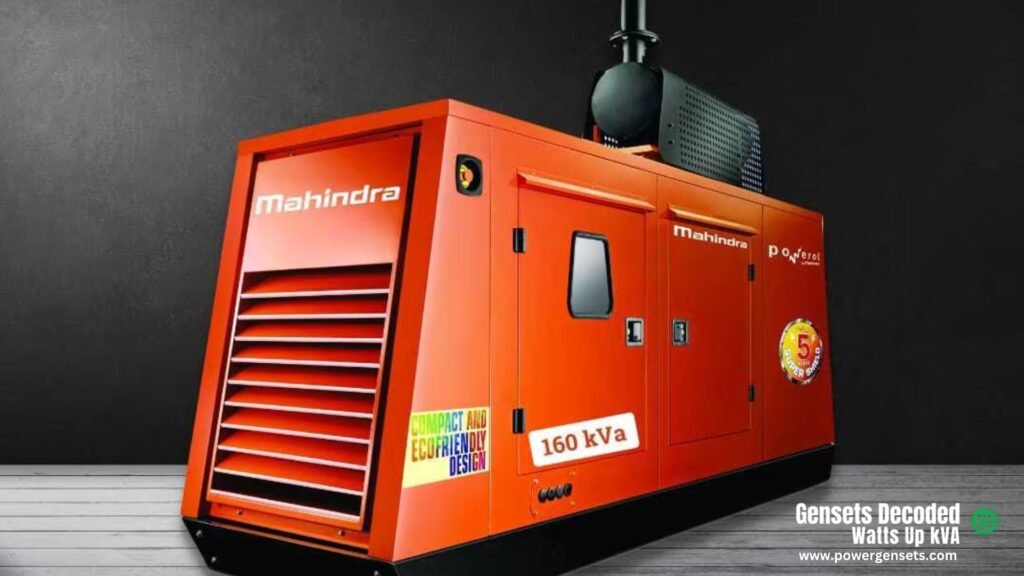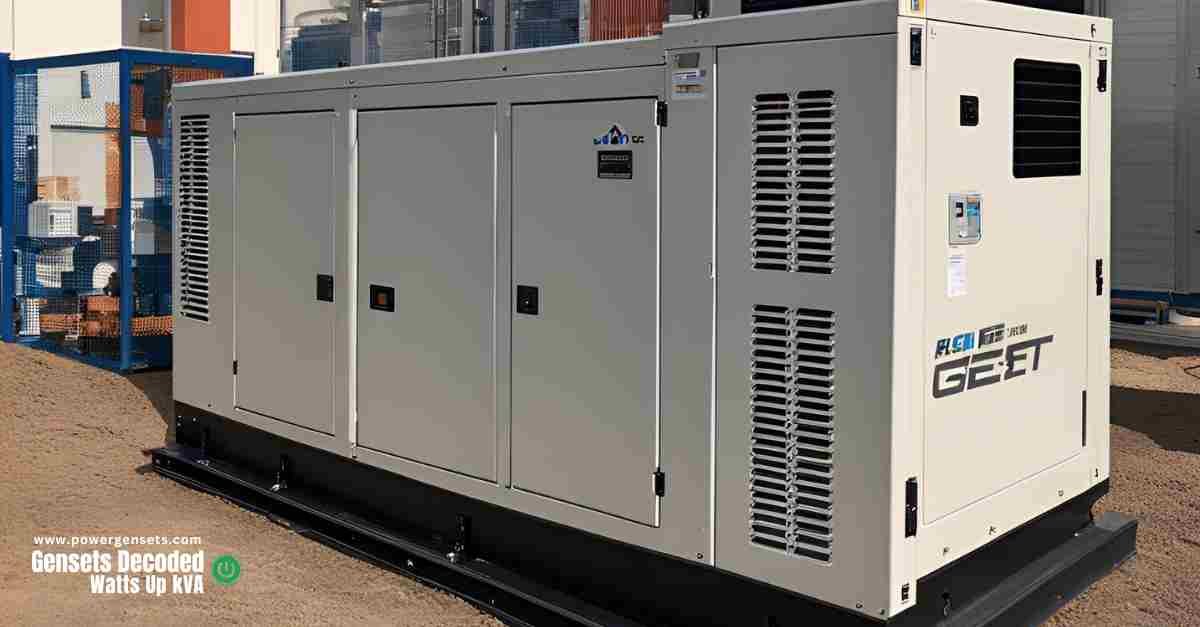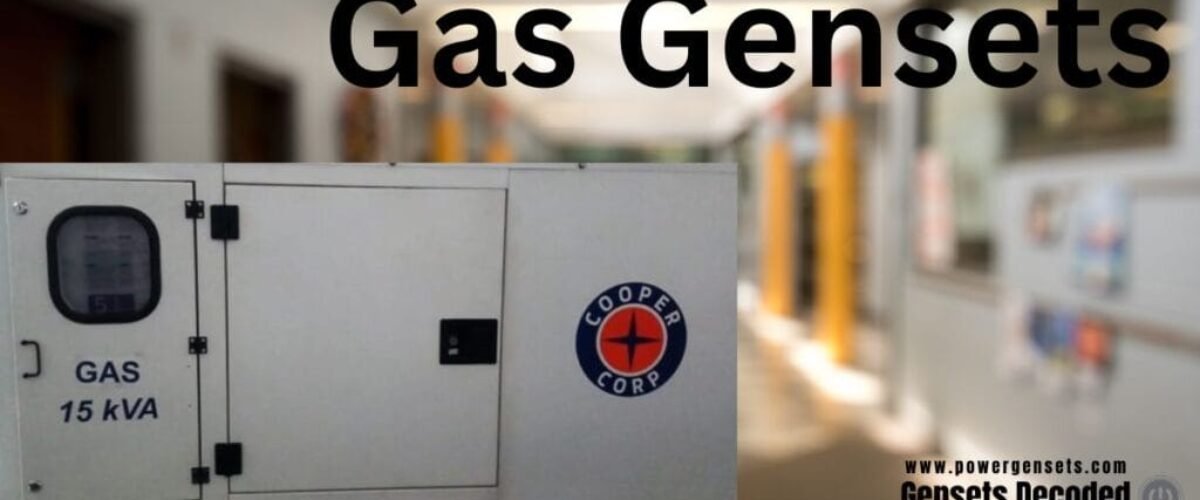Introduction
Gas gensets, or gas-powered generators, are becoming increasingly significant in today’s world. With environmental concerns and a push for sustainable solutions taking centre stage, advancements in this realm are pivotal. These innovative machines not only provide reliable power generation but also align with eco-friendly goals. As we move closer to 2024, it’s crucial to explore the latest trends and innovations in gas gensets, from enhanced efficiency to groundbreaking technologies shaping the future of clean energy.
Current Innovations in Gas Gensets

As we step into a world that increasingly demands sustainable solutions for power generation, gas gensets are undergoing a remarkable transformation. Innovations are coming thick and fast, making these generators more efficient, environmentally friendly, and compatible with modern energy needs. Let’s explore some of these cutting-edge advancements.
Advances in Engine Technology
The backbone of any genset lies in its engine, and recent advancements in this area have been nothing short of impressive. Engineers are hard at work designing next-generation engines that aim to boost efficiency while minimising emissions.
– Optimised Combustion Systems: By refining combustion processes, manufacturers can now achieve higher energy outputs with less fuel. This not only helps in reducing running costs but also lowers the carbon footprint of each unit.
– Turbocharging and Exhaust Recovery: Innovations like turbocharging and exhaust gas recovery systems help engines extract more energy from fuel. These technologies enable gensets to operate more smoothly and efficiently, even under fluctuating loads.
– Advanced Materials: The use of advanced materials in engine components is making gensets lighter and more durable. Materials that can withstand higher temperatures and pressures extend the lifespan of genset engines while reducing maintenance needs.
Integration with Renewable Energy Sources
In a world striving for carbon neutrality, the integration of gas gensets with renewable energy sources is a trend that’s hard to ignore. By combining traditional gas power with renewables like solar and wind, energy producers can create a more stable and reliable grid system.
– Hybrid Systems: These systems effectively balance generation and demand. During periods of low renewable energy production, gas gensets can kick in, ensuring a steady power supply.
– Smart Grid Compatibility: Modern gensets are designed to work seamlessly with smart grid technologies. They can automatically adjust power output based on real-time grid demands, resulting in energy savings and improved grid stability.
– Fuel Flexibility: The ability of modern gas gensets to utilise a variety of fuels, including biogas and hydrogen, further enhances their synergy with renewable energy sources, offering a path towards cleaner power generation.
Enhanced Control Systems and Monitoring
With technological progress, control systems and monitoring capabilities of gas gensets have seen a significant upgrade. This allows for better performance management, diagnostics, and ultimately, peace of mind for operators.
– Real-time Monitoring: Advanced sensors and IoT technology enable real-time monitoring of genset performance. Operators can track efficiency metrics, detect anomalies early, and conduct predictive maintenance to avoid costly breakdowns.
– Remote Access and Management: The latest gensets come equipped with features that allow remote access and management, meaning operators can adjust parameters and troubleshoot issues from anywhere with an internet connection.
– AI and Machine Learning: Leveraging AI, gensets can learn from historical data to optimise operational settings for different conditions, improving both efficiency and reliability.
Trends Shaping the Future of Gas Gensets
The horizon of gas gensets is expanding with trends that promise to reshape the landscape of power generation. Let’s dive into the core trends that are driving these changes and lighting the way forward.
Increased Focus on Efficiency and Emissions Reduction
Efficiency and emissions reductions are no longer just buzzwords; they are essential requirements in today’s power generation industry. As regulatory pressures mount, manufacturers and operators are responding with innovative solutions.
– Improved Thermal Efficiency: Significant strides are being made to enhance the thermal efficiency of gas gensets, ensuring more power is generated from the same amount of fuel.
– Emission Control Technologies: From catalytic converters to carbon capture systems, state-of-the-art emission control technologies are being integrated into gas gensets to meet stringent emission standards.
– Lean-burn Technology: By operating on a leaner air-to-gas mixture, cutting-edge gensets are reducing nitrogen oxide emissions while maintaining power output, thus supporting a cleaner environment.
Rise of Hybrid Power Solutions
Hybrid power solutions, combining gas gensets with renewable energy and storage systems, are gaining prominence. These setups offer multiple benefits, including flexibility and reliability, crucial in a world with fluctuating energy demands.
– Battery Storage Integration: Pairing gensets with battery storage allows for better management of supply and demand, smoothing out the peaks and troughs of renewable energy production.
– Load Sharing and Peak Shaving: Hybrid systems effectively distribute the electrical load across various energy sources, reducing the stress on any single component and improving overall system longevity.
– Microgrid Compatibility: Genset-based hybrid systems are increasingly forming the backbone of microgrids, ensuring a reliable energy supply with the ability to operate independently or in conjunction with the main grid.
Digitalisation and Smart Features
In this digital age, future-ready gensets are being equipped with smart features and digital capabilities that bridge the gap between traditional power generation and modern technological expectations.
– Smart Control Panels: New gensets feature smart control panels that simplify operation with intuitive interfaces and comprehensive display dashboards offering critical information at a glance.
– Cloud-based Solutions: With cloud-based solutions, data from gensets can be securely accessed, analysed, and stored, facilitating continuous improvement and operational transparency.
– Predictive Analytics: Digitalisation empowers genset operators to use predictive analytics for anticipating maintenance needs and preventing failures, leading to enhanced reliability and cost savings.
As we look towards the future, these innovations and trends highlight a promising trajectory for gas gensets. They not only support the current energy demands but also pave the way for a more sustainable, efficient, and technologically integrated power generation landscape. Adapting to these changes will ensure that gas gensets remain a key player in our pursuit of a cleaner and more sustainable world.
The Impact of Innovations on Sustainable Power Generation

The world is on a relentless quest for cleaner and more efficient energy sources, and gas gensets are stepping up to the plate with a host of innovations. As we push further into 2024, these power-generating marvels are undergoing significant transformations that promise to make a considerable impact on sustainable power generation. Let’s delve into how these innovations are shaping a more sustainable future for power production.
Cleaner and Greener Technologies
Gas gensets have traditionally been more environmentally friendly compared to their diesel counterparts, primarily because they emit fewer pollutants. However, advancements in technology are pushing the envelope even further. Newer genset models have been developed with advanced combustion techniques and catalytic converters that dramatically reduce emissions of nitrogen oxides (NOx) and carbon monoxide (CO). By integrating low-emission technologies, these gensets contribute substantially less to air pollution, setting a new benchmark in sustainable power generation.
Moreover, genset manufacturers are now focussing on using alternative gas fuels such as biogas and syngas. This not only diversifies energy sources but also reduces dependency on natural gas, paving the way for a sustainable and resilient energy ecosystem.
Enhanced Efficiency and Performance
The latest gensets incorporate technology that optimises fuel consumption and minimises waste. These improvements are largely due to advancements in engine control systems and fuel delivery mechanisms. For instance, the adoption of electronic fuel injection systems helps ensure precise fuel-to-air mixing, which enhances combustion efficiency and reduces fuel wastage.
Furthermore, the advent of digital twins in power generation has revolutionised maintenance and operational efficiency. By simulating the real-time performance of gensets, digital twins allow operators to predict potential failures, perform predictive maintenance, and optimise machine operation—all of which lead to prolonged genset life and reduced operational costs.
Integration with Renewable Energy Sources
Another exciting development in the realm of gas gensets is their ability to complement renewable energy sources. Hybrid power solutions, which combine gas gensets with solar or wind energy, are becoming increasingly popular. This approach provides a reliable and continuous power supply by compensating for the intermittent nature of renewable energy.
In such hybrid systems, gas gensets act as backup power sources, kicking in during periods of low renewable output. This not only ensures a steady power supply but also maximises the utilisation of renewable resources, reducing the carbon footprint of energy production.
Intelligent Control Systems
The integration of intelligent control systems is another breakthrough that vastly improves the functionality of gas gensets. These systems leverage AI and machine learning to monitor genset performance and make real-time adjustments. For example, they can automatically adjust the load-sharing among multiple gensets to optimise performance and fuel consumption.
Moreover, these smart systems facilitate remote monitoring and control, allowing operators to manage genset operations from afar. Such connectivity ensures swift responses to any operational anomalies and fosters a proactive approach to maintenance.
In conclusion, the future of gas gensets looks incredibly promising, with innovations driving significant strides towards sustainable power generation. By adopting greener technologies, enhancing efficiency, integrating with renewables, and utilising intelligent control systems, gas gensets are poised to play a crucial role in a cleaner and more sustainable energy future.
Conclusion
As the world moves towards a more sustainable future, gas gensets are proving to be a beacon of innovation and change in power generation. By embracing eco-friendly technologies and adapting to changing trends, these generators are paving the way for a greener planet. With ongoing research and development, the future looks bright for gas gensets as they become cleaner and more efficient.
– They’re integral to reducing carbon footprints.
– Supporting renewable energy grids.
– Meeting global energy demands with enhanced reliability.
The innovations unfolding are not just technological marvels but also crucial steps towards achieving sustainable solutions. As we look forward, it’s clear that gas gensets will play a pivotal role in meeting energy needs while caring for our planet. The journey towards a sustainable future is fuelled not just by innovation but by a commitment to using technology responsibly.
